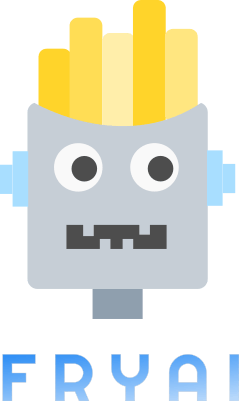- FryAI
- Posts
- What Trump’s "Big, Beautiful Bill" means for AI regulation
What Trump’s "Big, Beautiful Bill" means for AI regulation

Most people hit snooze. You hit smarter. Let’s see what today’s AI circus deep-fried overnight. 🍟
Stay up-to-date with AI
The Rundown is the most trusted AI newsletter in the world, with 1,000,000+ readers and exclusive interviews with AI leaders like Mark Zuckerberg, Demis Hassibis, Mustafa Suleyman, and more.
Their expert research team spends all day learning what’s new in AI and talking with industry experts, then distills the most important developments into one free email every morning.
Plus, complete the quiz after signing up and they’ll recommend the best AI tools, guides, and courses – tailored to your needs.
🤯 MYSTERY AI LINK 🤯
(The mystery link can lead to ANYTHING AI-related: tools, memes, articles, videos, and more…)
Today’s Menu
Appetizer: What Trump’s “Big, Beautiful Bill” means for AI regulation 🏛️
Entrée: Amazon announces DeepFleet 🦾
Dessert: AI outperforms human doctors in complex diagnostics 🩺
🔨 AI TOOLS OF THE DAY
📝 Teachany: Generate worksheets for any subject or grade. → Check it out
🍼 AI Baby Name: Use AI to create the perfect baby name. → Check it out
WHAT TRUMP’S “BIG, BEAUTIFUL BILL” MEANS FOR AI REGULATION 🏛️
Q: Why couldn’t the dog run for senator?
A: It didn’t have enough experience in pawlotics. 🐾
What happened? A provision to block states from creating new AI rules was removed from Trump’s “Big, Beautiful Bill” after Sen. Marsha Blackburn (TN) pulled her support.
Want the details? The rule would have barred states from introducing new AI regulations for five years if they wanted to access hundreds of millions in federal funding for AI infrastructure. However, it included exceptions for things like child exploitation, unauthorized image use, and deceptive practices. The original moratorium was set at 10 years but was halved to five as a compromise. But Blackburn, citing concerns from parents and creators, said that even the compromised version didn’t do enough to protect kids and consumers from Big Tech and demanded a full removal.
Why does this matter? This shows deep disagreement over how to handle AI regulation: Should states be free to act now to protect people, or should tech companies get a grace period to grow without extra rules? With AI spreading fast, who sets the rules—and when—could shape how safe and fair the technology is for everyone.
AMAZON ANNOUNCES DEEPFLEET 🦾
Why do Amazon packages always feel like Christmas presents? 🎁
What’s new? Amazon has developed a new foundation model called DeepFleet to optimize its factory robots.
How does it work? DeepFleet is a generative AI model designed to make Amazon’s massive robot fleet move more efficiently through warehouses. Like a traffic control system for thousands of moving machines, it reduces robot travel time by 10% by planning faster, smarter routes. Built using Amazon’s own data and AWS tools, this AI model helps speed up order fulfillment, cut costs, and store more items closer to customers.
Why does this matter? This brings real-world improvements: quicker deliveries, lower prices, and safer, more skilled jobs. With robots handling heavy lifting and repetitive tasks, Amazon employees can focus on higher-tech roles—and over 700,000 have already been trained for this shift.
AI OUTPERFORMS HUMAN DOCTORS IN COMPLEX DIAGNOSTICS 🩺
Q: Patient: “Doctor, I broke my arm in two places.”
A: Doctor: “Stop going to those places.” 😆
What’s new? Microsoft has unveiled a new AI system that outperforms human doctors in diagnosing challenging medical cases.
How does it work? Developed by Mustafa Suleyman’s AI team, the system mimics a panel of expert physicians to tackle difficult diagnoses. Using a “diagnostic orchestrator” paired with OpenAI’s o3 model, the AI solved over 80% of complex case studies from the New England Journal of Medicine, compared to just 20% solved by human doctors working solo. The AI works step-by-step like a real clinician—asking questions, ordering tests, and combining information across specialties.
“It’s pretty clear that we are on a path to these systems getting almost error-free in the next 5-10 years. It will be a massive weight off the shoulders of all health systems around the world.”
Why is this significant? This marks a major step toward what Microsoft calls “medical superintelligence.” While not yet ready for clinical use, the system could eventually help ease overloaded health systems and support doctors in difficult cases. Microsoft stresses that AI will assist—not replace—clinicians, leaving the human side of care, like empathy and trust-building, to medical professionals.
“WATCH THIS” WEDNESDAY 👀
In this interview, Google DeepMind CEO Demis Hassabis discusses the future of work in the age of AI. 👇
HAS AI REACHED SINGULARITY? CHECK OUT THE FRY METER BELOW:
What do ya think of this latest newsletter? |
Your feedback on these daily polls helps us keep the newsletter fresh—so keep it coming!





